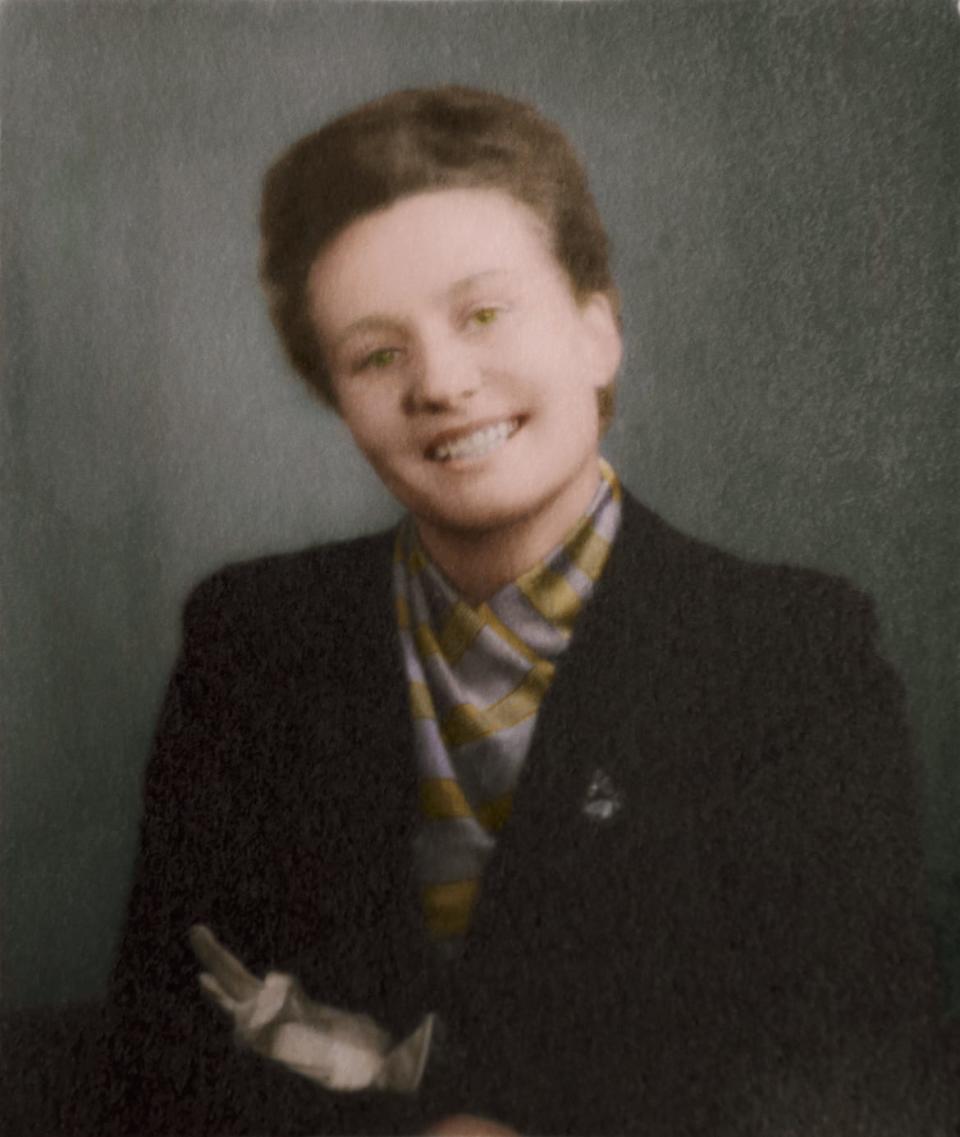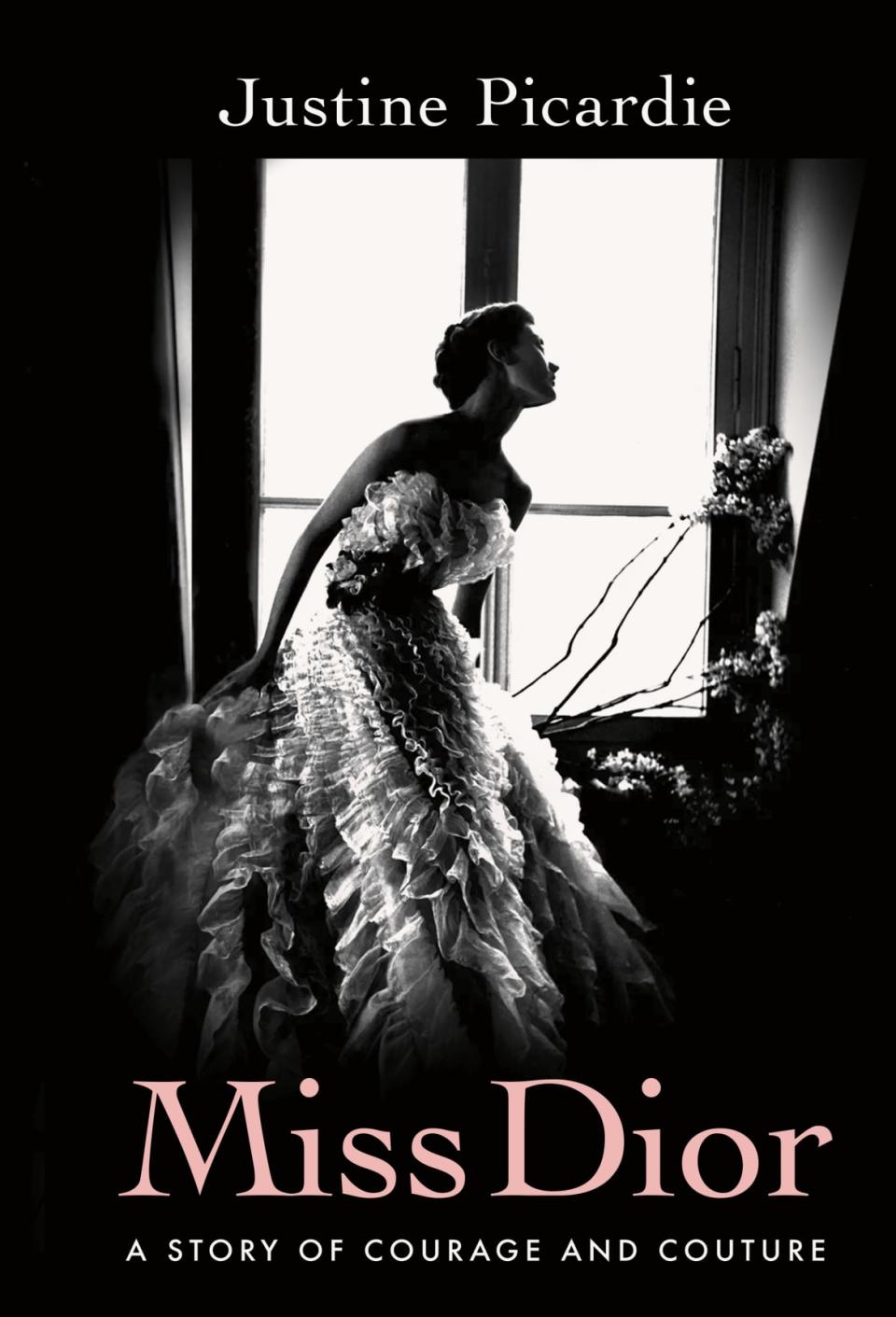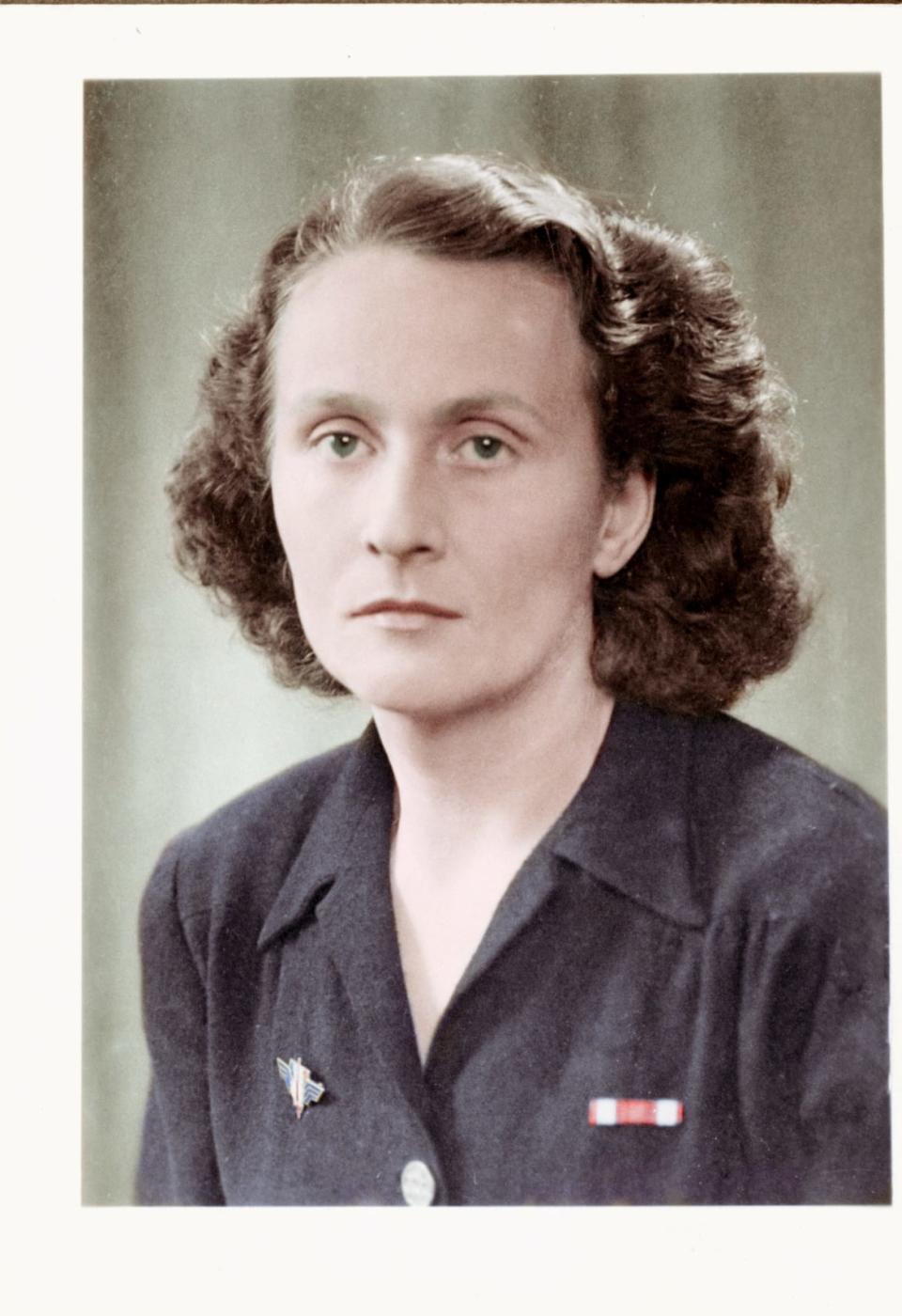Catherine Dior, Christian’s Sister, Was a French Resistance Hero. This Is Her Amazing Story.

- Oops!Something went wrong.Please try again later.
- Oops!Something went wrong.Please try again later.
- Oops!Something went wrong.Please try again later.
Many of the 20th century’s titans of fashions had ties to the Nazis. Coco Chanel was an enthusiastic antisemite who infamously fell in love with German intelligence officer Hans Günther von Dincklage. Hugo Boss manufactured the Hitler Youth uniforms (the brand issued an apology for its involvement in the war nearly sixty years after it ended). The Vuitton family collaborated with the Nazis and maintained a decadent storefront in Vichy France.
Now a newly rediscovered, and very unlikely, resistance hero is ready for her story to be told. Enter Catherine Dior, the kid sister of Christian, whose life and work in the French resistance is explored in Justine Picardie’s new book, Miss Dior: A Story of Courage and Couture.
Christian Dior Created Beautiful Fashion. He Also Knew How to Sell It.
Born in 1917, Catherine first lived a life of privilege as the daughter of a wealthy manufacturer. But the trauma of the era hit her family hard. Her brother Raymond served in the trenches of World War I and was the only member of his battalion to come back alive. He suffered from “shell shock,” now known as PTSD, and her other brother Bernard battled schizophrenia for much of his life.
Catherine’s father Maurice lost his fortune in the Wall Street crash, and Catherine—the youngest child—spent a lonely adolescence living with him on a farmhouse in Provence.

Catherine Dior before the Second World War.
Her world opened up when she went to live with Christian, then a fashion illustrator, in the late 1930s. Despite the impending darkness and unease around Hitler’s rise to power, the siblings enjoyed a bohemian lifestyle together, meeting artists and intellectuals.
Both siblings were breaking convention. Though he remained discreet about his relationships for his entire life, Christian was gay, and Catherine was aware of his sexuality. She had a partner of her own after the war broke out: Hervé des Charbonneries, a married man with three children, who introduced Catherine to the resistance.
At this point Catherine was in her early twenties. She worked as a shopgirl and also sold flowers. For her first underground task, she was asked to go buy a radio so her compatriots could listen to a broadcast by Charles de Gaulle, the leader of the Free French Forces. “Where did that courage come from?” Picardie wondered in an interview with The Daily Beast. “Well, she was young and it’s easier to find that courage when you’re still young. She was clearly idealistic and believed in democracy and freedom.”
Catherine used the apartment she shared with Christian, who at that time was a designer for Lucien Lelong (and whose duties included dressing the wives of Nazi officers), to hold meetings. She provided intelligence to British forces planning for D-Day.
Then Catherine was arrested, along with 26 fellow Resistance members. They had been betrayed by a double agent, and were taken to an apartment in Paris where they suffered brutal beatings and abuse. Though Catherine rarely spoke of her experiences with anyone, close friends told Picardie it was possible she was left unable to bear children after the horrors she endured while captured.

Even while in custody, Catherine continued to practice “small acts of resistance,” Picardie said. She lied to interrogators. She refused to break down. According to Picardie, the women who were held together formed a bond and looked out for each other, creating a chosen family.
“They were helped by a sense of sisterliness to one another,” Picardie said. “It took luck to survive a concentration camp, but it also took the help of the people around you and their support. I was struck by that.”
According to Picardie, Christian attempted to use his connected clients to obtain the release of Catherine, but he was unsuccessful. Within a month of being arrested by the French Gestapo, Catherine was sent to the Ravensbrück concentration camp in Northern Germany. She would be among the last detainees to leave Paris, just days before the Germans surrendered to the Allied forces.
Picardie writes that the prisoners were driven out of Paris on a bus while “many of the Germans were packing up to leave [the city].” One of the women detained with Dior, fellow Resistance member Virginia d’Albert-Lake, “described the bus journey through the crowded streets of Paris, where people stared at the women on board, some with a look of pity on their faces.”
Picardie uses artifacts like clandestine sketches drawn in secret by Catherine’s fellow resistance fighter Jeannette L’Herminier (who survived the war and lived to 2007) to illustrate the quiet ways prisoners managed to maintain shreds of their humanity. Another detainee made a friend a tiny embroidered heart carved from a cherry stone to give to another on their birthday.
Catherine refused to let the Nazis break her spirit. She and her close-knit group of French women would “accidentally” make mistakes while working in an effort to break factory machines.
“For Catherine Dior...it was imperative not to lose her self-respect,” Picardie writes. “When I talked to her godson, Nicolas Crespelle, he said that Catherine only told him one story from this time: that she would never fall to the ground to pick up a piece of food that an SS guard had thrown there. ‘She said that if you did that, your life was over.’”
Catherine was later sent to a satellite camp in Markkleeberg, Germany, where she worked in an aviation factory. It was April 1945, and the Germans would surrender by early May. Allied forces had already begun to liberate concentration camps like Bergen-Belsen and Dachau; Catherine and her fellow detainees would be “evacuated” from Leipzig, though the survivor Zahava Szász Stessel would write that, “Evacuation turned out to be a euphemism for death march.”
The detained women were ordered to march, despite many being too sick to walk. Picardie writes that they were forced on by “armed SS guards and snarling dogs.” One survivor said the group felt like “zombies, threatened with machine-guns” with bloodied feet caused by ill-fitting shoes. Catherine never told her family and friends how she made it out alive; all we have is documentation that she was liberated by Soviet troops on April 21, 1945.
As Picardie writes, this was not exactly a joyous event, There is evidence to suggest that Soviet troops would rape female prisoners of war even as they freed them, though we do not know what Catherine experienced.
She returned to Paris, and her family, in 1945. A photo taken that year shows a 26-year-old Catherine sitting for a portrait in her Free French uniform. Her face is gaunt and her eyes are haunted. Catherine would rarely speak of the war, but her face tells the story of an unimaginable trauma. When Christian came to pick her up at the train station, he could not recognize his beloved sister.
“There is such a sadness in her face,” Picardie said. “There is a picture of Catherine when she’s living with Christian [before the war], where she’s smiling. Then just a few years later, we see that sadness of the woman who returns.”

Catherine Dior, age 26, after returning to Paris.
She suffered from injuries to her hips, back, and feet, as well as chronic arthritis, rheumatism, and kidney problems. Along with the physical scars, Catherine bore unseen ones as well: for the rest of her life, she battled insomnia, nightmares, memory loss, anxiety, and depression. “Her dossier also reveals that she developed a need for ‘isolation’; in common with many other survivors, she retreated into silence, rather than discussing her history of torture and the suffering she had experienced in the camps,” Picardie writes.
Yet Catherine soldiered on, reuniting with her lover des Charbonneries, whom she would remain devoted to until his death in 1989. She became a florist and worked in the flower district of Paris, once again living with Christian. Relieved by the safe return of his sister, Christian began planning to go out on his own as a designer. Picardie believes it was no accident it took Catherine’s safe homecoming to get him to that point.
“It wasn’t until her return that he showed any ambitions to set up a couture house of his own,” Picardie said. “She’s a flower woman upon her return, and what becomes known as the Dior ‘New Look’ is clothes for flower women.”
Christian debuted his first collection—which was dubbed the “New Look” by Harper’s Bazaar editor Carmel Snow—in 1947. It smashed conventions of the militaristic, pragmatic fashion of the time. Many people were still living off wartime clothing rations, but Christian released his line of unapologetically romantic and nostalgic clothing, with long hemlines, tiny waists, and corsetry underneath. It catapulted the 42-year-old to superstardom. Wallis Simpson and Princess Margaret may have hated each other, but even they could agree on one thing: they just had to have the latest Dior.
But, in a scene that mimics much of the talk about whether fashion matters in the wake of a devastating pandemic, Christian had no shortage of detractors. Americans would picket outside of his hotel room when he first toured America, and many believed it was too soon after the war to celebrate or indulge in frivolous fashion.
“There’s this great question we all ask ourselves after a period of trauma, disruption, and tragedy: Can there be beauty after so much darkness?” Picardie said. “Christian Dior’s answer to that is yes. After so much darkness, beauty matters more than ever. Dior said that fashion is an act of faith and it’s maintaining a great tradition. Other people might say, after so much horror can we still believe in beauty?
“After having researched and written the book, I feel that yes: to grow a rose or design a beautiful dress is an act of hope in the future. You don’t do that without believing in light after the darkness. Perhaps it’s only when you know and have experienced the true meaning of darkness that the light becomes all the more miraculous, to be cherished and celebrated.”

Miss Dior author Justine Picardie
Dior also named his famed perfume, which exists to this day, “Miss Dior,” with his sister as his muse. The—you guessed it—floral fragrance was intended to be “the scent of love,” according to Christian. Catherine may have inspired Christian, but she was no fashion obsessive. She supported his brother and wore some of his pieces, but preferred unfussy designs which allowed her to move and work in her garden. In 1952, while her brother rode the waves of fashion superstardom, she testified in a trial against 14 people who tortured her in the Parisian Gestapo office.
Her words were featured in Le Monde, but the Dior connection was never made. Picardie believes this might have been because a beleaguered public did not pay much attention to this trial. “I think it was still a taboo to talk about what had happened openly,” Picardie said. “It took a collective amnesia for France to be reunited and reconciled, which involved actively not thinking about the war.”
Christian died suddenly from a heart attack in 1957, at the age of 52. He left his estate to Catherine and a close friend, Raymonde Zehnacker. He also called Catherine his “moral heir,” the person responsible for upholding the good name of his company. She was put to the test when her niece Françoise Dior, who Picardie believes she may never have even met, came out as a neo-Nazi and married far-right figure Colin Jordan in 1963. Catherine, who would not even travel to Germany or use German products following her experience in the camps, had to release a statement admonishing her niece and saying she did not speak for Dior, the label.
Picardie does not include Françoise in the book. “I thought quite deeply about this,” she said. “I thought, do I want to go down the rabbit hole of Françoise? This took place after Christian’s death and in the chronology of the book, for her to have appeared, I would have been when Catherine is growing her roses and making a life for herself. I didn’t want Françoise there.”
Catherine and Hervé moved to southeastern France, where she lived until her death in 2008, age 91. She once spoke to local school children about the World War II, and a veteran came up to her wanting to know more about her time in the resistance and camps. “She looked taken aback...but did not turn away from him,” Picardie writes. “She simply said, ‘Aime la vie, jeune homme.’ Love life.”
Picardie learned about Catherine while researching for a potential book on Christian. She believes her biography is not just about the resistance fighter. “There are three main characters: Catherine, Christian, and Miss Dior, who is an imaginary vision of femininity that emerges in the aftermath of the Second World War,” she said. “When I heard about Catherine from a Dior archivist, I thought, ‘Oh my God, there is this extraordinary woman who is the inspiration for Miss Dior. Why has nobody been interested by her?’ And what does that tell us, the fact that her story has been forgotten literally by history—his story?”
Get our top stories in your inbox every day. Sign up now!
Daily Beast Membership: Beast Inside goes deeper on the stories that matter to you. Learn more.

